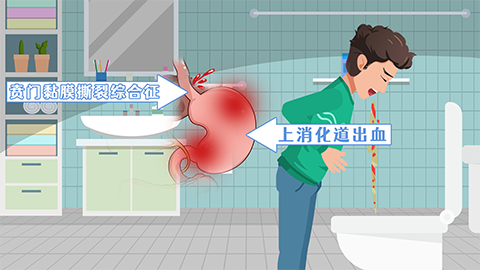What are the symptoms of upper gastrointestinal bleeding?
Generally, upper gastrointestinal bleeding refers to bleeding from the esophagus, stomach, duodenum, biliary tract, or pancreas. Patients may experience symptoms such as black tarry stools, peripheral circulatory failure, anemia, fever, and hematemesis (vomiting of blood). It is recommended to seek timely medical attention, identify the underlying cause, and undergo symptomatic treatment under the guidance of a qualified physician. Detailed explanations are as follows:

1. Black Tarry Stools
When blood passes through the intestines, hemoglobin reacts with sulfides in the intestine to form iron sulfide, turning the stool black. If there is a large volume of bleeding and the blood moves rapidly through the intestinal tract, the stool may appear dark red or bright red.
2. Peripheral Circulatory Failure
Acute and substantial blood loss rapidly decreases circulating blood volume, leading to peripheral circulatory failure. At this time, insufficient blood supply to the brain can cause symptoms such as dizziness and palpitations. The body initiates compensatory responses to maintain blood supply to vital organs, which may manifest as increased heart rate and low blood pressure.
3. Anemia
Upper gastrointestinal bleeding results in blood loss, reducing the number of red blood cells and decreasing hemoglobin concentration, thereby causing anemia. In severe cases of anemia, oxygen deficiency in various organ tissues can lead to symptoms such as pallor, fatigue, and dizziness.
4. Fever
Following upper gastrointestinal bleeding, the absorption of digestion products of large amounts of blood proteins in the intestine temporarily elevates blood urea nitrogen levels, stimulating an inflammatory response in the body and resulting in fever.
5. Hematemesis (Vomiting of Blood)
During upper gastrointestinal bleeding, damage to the gastric mucosa causes rupture of blood vessels, and the blood stimulates the vomiting center, leading to hematemesis. The vomited blood is typically brownish-black in color, resembling coffee grounds. However, if the bleeding volume is large, the blood may appear bright red or contain blood clots.
Patients may follow medical advice to use medications such as omeprazole enteric-coated capsules, hydrotalcite chewable tablets, and aluminum phosphate gel for treatment. Additionally, cultivating healthy dietary habits and reducing the intake of spicy and irritating foods can help maintain gastrointestinal health.








